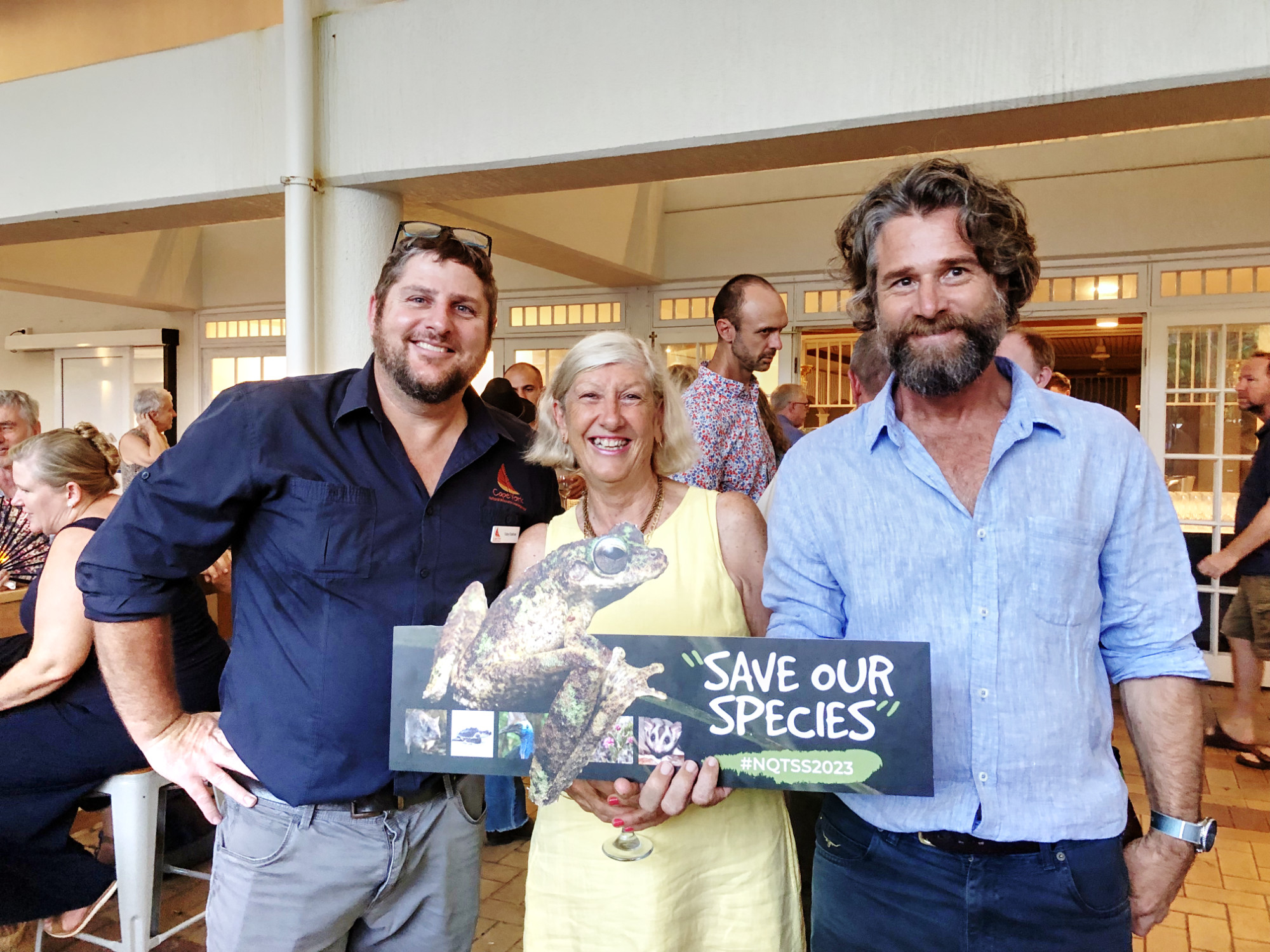Sharks and Rays Australia (SARA)
Threatened Species draws sell-out crowd
Threatened Species draws sell-out crowd
Two days, 270-plus passionate, knowledgeable people and a lot of work ahead… With growing concerns about the number of threatened species in our region - from cassowaries, golden-shouldered parrots and sawfish to Mabi rainforest and ant plants – it’s no surprise that the recent North Queensland Threatened Species Symposium was a sell-out.

Held in Cairns, the event brought together conservationists, scientists, traditional owners, natural resource management organisations and government representatives to share everything from learnings, challenges, project news, and the latest research to cultural knowledge, monitoring methods, and recovery team achievements.
The focus was also on funding needs, funding opportunities and, most importantly, collaborative actions that will make an impact.
Cape York NRM Executive Chair Sally Grey said the organisation recognised the changing social, cultural and environmental landscape of Cape York Peninsula.
“We welcome government putting First Nations at the centre of northern Australian environmental management and sustainability.,” she said. “As the NRM organisation for the region we will continue to build strong partnerships with First Nations and the broader community in Cape York to protect and improve threatened species habitat and ecological communities. We are very proud to be part of the Symposium and the positive initiatives it brings to the region.
The North Queensland Threatened Species Symposium was hosted by the NQ NRM Alliance (Terrain NRM, Cape York NRM and Gulf Savannah NRM) in partnership with the Australian and Queensland governments. It was supported through funding from the Australian Government’s National Landcare Program and the Queensland Government, as well as sponsors: the Wet Tropics Management Authority, The Nature Conservancy, Bush Heritage, the World Wildlife Fund, Centre for Tropical and Environmental Sustainability Science, Queensland Water and Land Conservation, Biosphere Environmental Consultants, the Wildlife Preservation Society of Queensland, Up North and Skyrail Foundation.
Some of the good news included:
- New ‘Priority Place’ listing: The ‘Eastern Forests of Far North Queensland’ was recently listed by the Australian Government as one of 20 priority places for threatened species recovery under the Threatened Species Action Plan. At the Symposium, recovery teams worked with planners on sustainable solutions for both conservation and development.
- Mabi Forest: A new ‘Reforest’ initiative will revegetate an area near Wongabel State Forest that was logged. Reforest has launched an app, with the support of the tourism industry, so businesses and their customers can invest in local regenerative efforts that’ll contribute to drawing down carbon.
- Cassowaries - Wet Tropics & Cape York: A Cassowary Recovery Plan will go out for public comment soon. The Wet Tropics cassowary population appears to be stabilising. The recovery team is cautiously optimistic. On the Cape, there is new knowledge about cassowary populations. After decades with no recorded sightings, a recent survey in the Apudthama National Park found 10 cassowaries living in the region. Actions include the development of a cassowary management plan, traditional fire management, pig and cattle management in cassowary country and Indigenous ranger training.
- Indigenous ranger program: This program is continuing to expand, building capacity in First Nation organisations.
- New Queensland Threatened Plant Network: The Queensland Government is establishing this network to improve coordination of recovery efforts across the landscape rather than just in protected areas. It’ll be open to any organisation - from community and non-government to local government and other government agencies. Seed funding for a number of projects is part of this initiative.
- Feral Pigs: There will be a National Feral Pig Conference in Cairns on 20-21 June, following on from a recent Virtual Stakeholder Forum. A working group has just released a prospectus aimed at securing longer-term funding.
- Threatened Species Priority Framework: It is being co-developed by the Queensland Government and CSIRO. This is a decision support tool, underpinned by a database, that will be publicly available.
- National Environmental Science Program funding: NESP will be funding four-year projects as part of its Resilient Landscape Hub, to start in 2024. Among other things, there will be a focus on indigenous partnerships, restoration initiatives, threatened species and threatening processes. Also, NESP’s Climate Systems Hub is very interested in a tropical case study.
Strong messages from the symposium included:
- Longer-term funding: This is needed to prevent recovery reversals, make recovery actions more strategic, support the efforts of recovery teams and build capacity for traditional owner-led recovery efforts.
- Traditional knowledge: Traditional knowledge and increased Traditional Owner involvement is crucial in threatened species recovery work and landscape restoration. Real and meaningful engagement with Traditional Owners could require structural reform.
- Place-based recovery efforts: Many threatened species and ecological communities share the same habitat and/or face similar threats - there is value in multi-species place-based approaches, and a need to increase coordination, capacity and resources.
- Conservation management: Effective management combines knowledge, action and monitoring. There is a need to align state and federal government recovery team frameworks and threatened species priorities and plans, while recognising that community groups have a strong desire to retain ownership of recovery efforts.
- Succession planning: The importance of succession planning in recovery teams and recovery efforts.
- Future events/networks: The benefits of bringing groups together to share and learn from each other.

